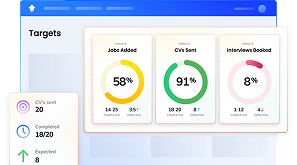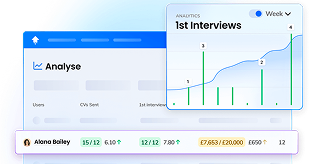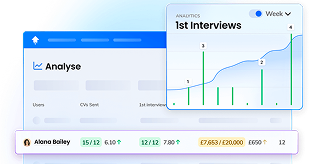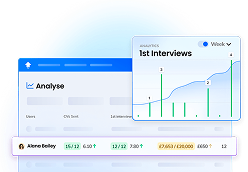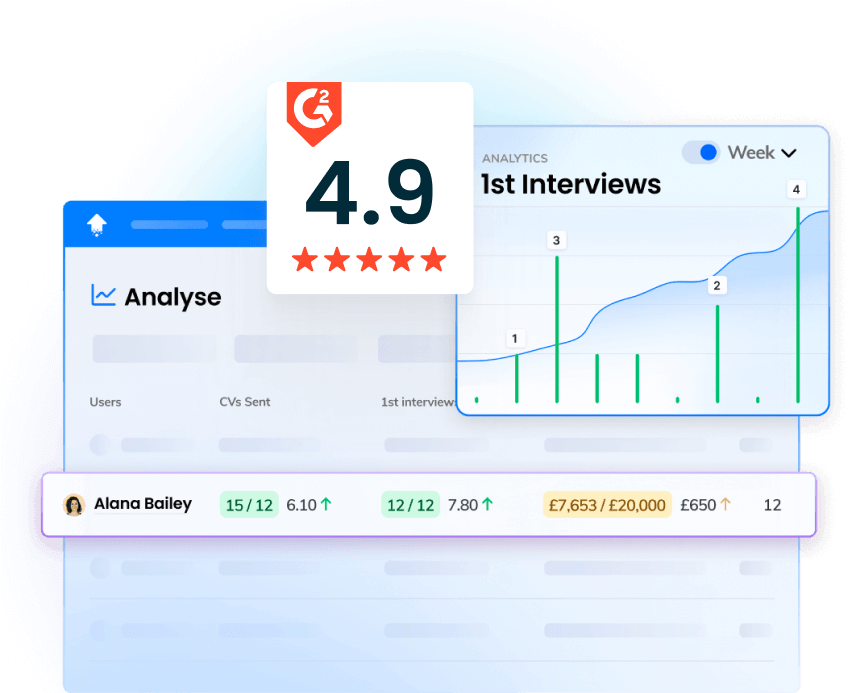Account executives have typically worked at the bottom of the sales funnel, closing deals.
However, as the sales landscape evolves, with higher levels of competition and fewer resources available, these sales professionals are expected to contribute more.
Indeed, account executives are now expected to initiate their own prospecting efforts.
But with little training or experience in this area—and plenty of other sales tasks to complete each day — many are reluctant to engage with prospecting.
Sales leaders must now strive to motivate account executives to embrace prospecting by improving sales productivity on their teams.
After all, if you expect team members to take on extra responsibilities, it's vital to give them the time necessary to succeed in these dual tasks.
This guide will explore actionable strategies to motivate account executives to embrace prospecting, ultimately enhancing overall sales productivity and effectiveness in a fiercely competitive market.
Understanding Sales Productivity
At its core, sales productivity is a measure of how effectively and efficiently a sales team uses its resources to achieve its targets and generate maximum revenue.
These resources may include time, budget, team members, strategies, and technology.
Sales productivity aims to maximise a sales team's output, such as its revenue, client interactions, and deals closed, while minimising its input — the resources used.
Read more about how to measure sales performance here.
Importance of Sales Productivity in 2024
In 2024, sales professionals operate in a highly competitive market while sales organisations slash budgets.
This means sales leaders need to be able to get more results with fewer resources.
Therefore, sales team members need to widen their skill sets, with sales managers now leaning on them to complete a broader range of tasks.
For instance, account executives are now expected to initiate their own prospecting efforts — whereas once they would mainly have focused on closing deals.
Getting productivity in sales right is essential if your team is to thrive in 2024, and doing so leads to myriad benefits, including:
- Improved pipeline management
- Higher quality leads
- Increased deal closures
- Better sales rep engagement
- Higher revenue generated
- Improved goal setting
- More goals achieved
How to Measure Sales Productivity
Measuring sales productivity is the practice of finding out the ratio of your sales output vs your sales input.
The first step is to define the sales productivity metrics and key performance indicators by which you measure both output and input. This will vary from team to team.
There are many potential sales productivity metrics, including:
- Conversion rates
- Sales cycle length
- Average deal size
- Revenue per sales rep
- Time to close
- Opportunity win rate
- Quota attainment rates
- Customer acquisition cost
- Average contract value
Once you have chosen your metrics, set up custom dashboards that track them in real time.
Finally, choose a specific period of time to measure, and then identify a relevant sales productivity formula that will generate the answer you’re looking for.
20 Strategies to Improve Sales Productivity
Wondering how to increase sales productivity?
Here are 20 key strategies to adopt.
1. Embrace Sales Tools
Investing in cutting-edge tech such as advanced CRM, AI, sales productivity tools, and sales automation tools is one of the fastest ways to supercharge your sales team.
These tools streamline lead management, customer interactions, and sales workflow, freeing your account executives to focus on high-value, human-driven tasks.
2. Strategically Assign Sales Territories
Nail the logistics, and you should see sales productivity rocket.
Harness data to assign sales territories that minimise travel time and costs while maximising sales potential.
Track relevant sales rep productivity metrics to evaluate your team members' strengths, weaknesses, and preferences. Then, feed in any existing relationships and customer loyalty each rep has built up.
Now, consider their location and match each sales rep with the most appropriate territory.
3. Use Data Visualisation
Data visualisation can be used to optimise territory management and strategic planning.
Invest in dynamic mapping software that allows you to visualise customer locations.
This makes it easier to optimally distribute customers, leads, and workload across your sales team.
4. Automate Administrative Tasks
For decades, tedious, administrative tasks have kept sales reps away from the part of the job they love — selling.
But with sophisticated automation technology now on the market, increasing sales productivity has never been easier.
Automation tools can handle repetitive, time-consuming tasks such as scheduling meetings, reporting, activity logging, lead entry, emails, and much more. What's more, they'll do it faster and more accurately than your sales reps.
Meanwhile, your sales reps can thrive in the human-facing part of their role.
5. Optimise Sales Routes
Planning efficient sales routes reduces travel time while increasing the length or number of valuable face-to-face client interactions.
If you're not dealing with many sales reps or stops, you should be able to achieve this manually.
However, sales leaders working at larger companies should consider investing in sales route optimisation software, which will crunch the numbers and plan the route for them.
This is a simple way to boost your sales reps' productivity while saving money on travel.
6. Establish Routine Check-ins
Regular check-ins are a crucial part of ensuring your sales team is performing well — but for busy sales leaders, it's all too easy to put them on the back burner.
Find out everything you need to know about sales performance management.
Create a structured schedule for regular team meetings to ensure alignment and address any issues promptly.
This stops minor issues from snowballing into major problems, gives you insight into how best you can support your team, and allows you to spot opportunities that may have otherwise been overlooked.
7. Set Clear Daily Goals
Without clear goals to work towards, your team will lack purpose, motivation, and direction — especially when you're not physically in the same workplace every day.
Define and communicate daily sales goals to ensure your team is driven and focused on the targets that matter most to you.
Employ software like OneUp to create custom dashboards that track progress towards these goals in real time and launch sales competitions on leaderboards.

8. Implement a Lead Scoring System
A robust lead scoring system enables your team to get their priorities right.
It means account executives understand exactly how much time they should be spending on each client, without the need for sales leaders to micromanage this process.
If done right, a lead scoring system won't just save you time; it will also significantly increase conversion rates.
9. Develop a Comprehensive Onboarding Programme
Creating a standardised, comprehensive onboarding programme significantly boosts productivity when making new hires.
If a colleague or sales leader has to take the time to manually onboard every single new hire, you're wasting precious time that could be spent turning leads into clients.
Of course, any onboarding process should include a human-led element to ensure the new hire feels welcomed.
However, much of this training can be standardised when it comes to passing on knowledge about products, markets, and sales techniques.
For example, you could create an automated workflow with presentations, articles, videos, and assessments — in addition to a handful of human-led milestones.
In addition to saving you time during the onboarding process, a thorough programme should also ensure the new hire is ready to hit the ground running.
10. Encourage Peer-to-Peer Coaching
Peer-to-peer coaching is an effective way to enhance the skills and motivation of new or struggling account executives on your team.
Establish a mentorship programme where experienced salespeople are assigned to train those who need some extra help.
In addition to improving the performance of mentees, boosting productivity, mentorship programmes inspire better relationships among your team, and give mentors new skills.
It can also be incredibly motivating to work closely alongside a helpful colleague, rather than only receiving training from an authority figure, who new hires may be wary of asking questions or raising issues with.
11. Maintain an Accountability Framework
Develop an accountability framework in which team members hold each other accountable for completing their goals and tasks.
This framework should clearly state who is responsible for each task, and when it needs to be done by.
When account executives fail to complete tasks or their progress towards goals is lagging, this should automatically be flagged on a transparent system, allowing their colleagues to hold them accountable.
Again, this can be more motivational than getting directions from a sales leader, as reps will be less likely to want to let their colleagues down.
12. Batch Processing for Efficiency
Every sales leader knows that administrative tasks can interrupt the flow of more high-value work and distract from the essential stuff.
That said, they need to get done.
To boost productivity, organise administrative tasks into batches. Then, block out time to work through these batches.
This reduces context switching — saving you time — and increases focus on sales activities.
13. Leverage Email Automation
Many sales tools now come with built-in email automation.
Leverage automated email sequences that enable you to maintain contact with prospects at specific touch points throughout the sales cycle without the manual effort that was once required here.
Remember — just because your emails are automated doesn't mean they shouldn't be personalised.
You can set up separate email sequences for different audience segments, and use simple code to ensure the email references each recipient's name.
14. Regularly Update Sales Content
This is another essential task that is regularly relegated to the back burner.
Regularly updating your sales enablement materials and documents is critical to productivity — as is ensuring their accessibility.
Having these assets polished and ready to go at the touch of a button is crucial when responding quickly to a lead or a client.
If your sales rep has to take the time to read and update materials before sending them over, this gives the lead plenty of time to lose interest or research rivals.
What's more, account executives should be able to confidently pull out any of your sales materials at the touch of a button in meetings.
After all, giving leads and clients the information they need when they ask for it is much more likely to lead to conversions.
It's also vital to ensure these sales materials are well organised so clients are not accidentally sent old versions of documents or conflicting information.
15. Centralise Customer Data
Nothing slows down a sales rep more than having to search across multiple platforms and tools for crucial customer data.
In the era of personalisation, it's vital that account executives have centralised, easy-to-find customer data and historic interactions at their fingertips.
Furthermore, data entry is time-consuming, so don't force your team to enter the same data multiple times into several different systems.
Instead, invest in a CMS that integrates with the rest of your tech stack, automatically pulling through new information in real-time.
This will give your team a more comprehensive overview of client interactions, give you better customer insights, and ultimately drive up productivity.
16. Reduce Meeting Times
It's no secret that meetings can be a massive time-sink in any work environment.
But in a fast-paced profession like sales, every second counts.
Streamline meetings by establishing clear agendas and sticking to scheduled times to free up more selling time.
While it is important to have adequate Facetime with your account executives, always ask yourself: Could this meeting be an email?
17. Foster Sales and Marketing Alignment
Sales and marketing need to have a productive and highly collaborative relationship to succeed in prospecting and deal closing.
Sales and marketing alignment results in a consistent brand message across all outward communications, from website and blog to client calls and meetings.
If your messaging is inconsistent—for example, if your phone manner doesn't reflect the vibe of the website—you'll dent customer trust in your brand and struggle to generate quality leads.
What's more, marketing can help with tasks such as creating and updating sales enablement materials and giving your team back time for the face-to-face pitches and meetings they shine in.
18 Celebrate Milestones and Wins
Too many sales leaders underestimate the impact a simple act of recognition can have on their account executives.
It may not feel like a considerable effort to give a sales rep a pat on the back after they've closed a deal, but it can go a huge way to motivating team members and boosting morale.
Sales leaders should regularly recognise and celebrate individual and team successes to ensure their team strives to be as productive as possible.
These celebrations should include public and private words of recognition and tangible rewards such as bonuses, event tickets, and dining vouchers.
19. Invest in Continuous Training
The sales industry is fast-moving, with new techniques, trends, and technology frequently emerging.
This means even your most experienced reps should be continuously learning.
Offer ongoing training in sales skills, product features, and emerging market trends to ensure your team remains informed and effective.
This could include:
- Internal training sessions
- Training sessions delivered by external experts
- External qualifications
- Mentoring
- Coaching
- Peer-to-peer training
- One-to-ones
- Job shadowing
- Workshops
- Roleplay
- Industry events such as conferences and seminars
20. Promote a Customer-Centric Approach
A customer-centric approach is vital in the competitive sales arena of 2024.
Clients now expect sales reps to act as consultants, and any attempt to return to the 'pushy' selling of years gone by will likely deter the customer from signing on the dotted line.
Train the team to start any client interaction by focusing on understanding and attempting to help solve customer problems.
And lead by example—if you consistently reinforce the message that the customer comes first with your actions and words, this approach will become embedded in your team's DNA.
Pitfalls Affecting Sales Productivity
When striving to elevate sales productivity within your team, it's essential to avoid these eight pitfalls that could jeopardise your hard work.
1. Inadequate training or resources for new sales tools
Every sales leader should ensure their team is equipped with modern sales tools and cutting-edge knowledge of the industry and the products or services they are selling.
Failing to budget for the latest sales tools means your sales team is left behind competitors.
For example, if your account executives don't have access to automation tools, they will be forced to spend much more time on tedious administrative tasks than teams at rival companies — leaving them much less time for selling.
Furthermore, without a continuous learning programme, they will fall behind peers at rival brands equipped with knowledge about the latest sales techniques and emerging industry trends.
This leaves your sales team on the back foot when face-to-face with clients.
2. Misalignment between sales goals and actual market conditions
Before setting sales goals, it's crucial to perform benchmarking exercises.
Investigate sales performance within your sector and historic performance within your organisation — and consider this data when setting sales goals.
Failing to properly benchmark and discover sales productivity statistics can lead to setting sales goals that are either completely unrealistic or too easy to hit.
Either way, your sales team will lose productivity striving to hit impossible goals, or relaxing after achieving their targets too early.
3. Overemphasis on the number of calls/visits over the quality of interactions
Decades ago, mastering sales was all about quantity.
How many calls could you rush off? How many visits could you make in the shortest amount of time?
But with a saturated sales market, and customers weary of constantly being sold too, quality goes a much longer way than quantity in 2024.
Lead scoring can help to ensure account executives are dedicating their time to the right potential customers, but it's also essential to normalise a culture of quality within your sales team.
This means avoiding setting quantitative targets such as 'make [X number] of cold calls per week' and instead focusing on outcomes by setting goals like 'bring in [Y number] of new customers per week'.
Such goals should motivate account executives to adopt the tactics they know work, such as thoroughly researching qualified leads before meetings and taking a consultative approach to selling.
4. Failure to adapt sales strategies based on customer feedback and sales data
Sales strategies should be living, breathing documents that constantly evolve based on the latest customer feedback and sales data.
Sales leaders must have a clear overview of the data that reveals exactly what is happening to their team. After all, if you're not making data-driven decisions, your sales strategy is based on little more than guesswork.
Set up custom dashboards to track key metrics in real-time and implement a system for analysing customer feedback. Then, automate reporting and ensure sales productivity analysis is a regular task on your to-do list.

Now, consistently adapt your sales strategy based on this information — and don't be afraid to experiment.
For example, if you have a hunch that targeting COOs instead of CEOs will boost sales, try it out and track the key metrics that tell you whether your hypothesis is correct or whether you should revert to targeting CEOs.
5. Lack of clear differentiation in competitive markets
A strong USP is vital for any organisation aiming to thrive in competitive markets.
After all, you need to give potential customers a solid reason to choose your product or service over those of many competitors.
Account executives must be trained to emphasise this USP and differentiate their products and services from those of the competition.
They should also be equipped with sales enablement materials that back up this USP with data, client results, and testimonials.
Failing to differentiate your company in a saturated market will result in failed pitches and lost deals, driving down productivity.
6. Inconsistent follow-up on leads and opportunities
If a lead or opportunity is right there in front of you, seize it.
At this point in the sales cycle, the work of raising awareness and building interest in your product or service has already been done.
Letting it slip through the net means starting all over again.
Develop a standardised workflow to ensure that leads and opportunities are consistently and thoughtfully followed up.
This workflow should clearly communicate to account executives what action needs to be taken and at what point.
7. Poor data management leads to duplicated efforts and missed opportunities
A robust data management system has never been more critical.
Organisations are aware of just how important data is to their success — but too many gather data indiscriminately and fail to store it in an organised manner.
Ultimately, this means account executives are spending time gathering and inputting data that simply isn't useful.
Instead, develop a data management structure incorporating innovative data analytics tools that do much of the work for you.
Perform a data audit, eliminating data that is irrelevant, inconsistent, or duplicated.
8. Burnout due to unrealistic expectations and high-pressure
A form of exhaustion caused by feeling constantly overwhelmed by workload — burnout will tank the productivity of any account executive.
Salespeople need goals to strive for, and it's no secret that sales are a high-pressure world.
But turn up the heat too high — for example, by setting unrealistic goals — and you risk triggering burnout in previously productive sales reps.
Burnout symptoms include feeling drained, feeling like you can't cope, insomnia, sadness, irritability, indifference, and becoming sick more often.
Sales leaders can help to avoid it by offering support, frequently reviewing workload, allowing extra time for deadlines, ensuring account executives take breaks, encouraging collaboration, and launching physical and mental wellness initiatives.
Why Improved Productivity Facilitates Better Prospecting
Elevated productivity will lead to improved performance in almost every aspect of sales, but it can have a particularly positive impact on prospecting.
1. Efficiency Creates Opportunities
Increased sales productivity frees up time for account executives to spend at the top of the funnel — prospecting.
Gift your team extra time for prospecting by boosting the efficiency of administrative tasks through automation.
Meanwhile, equip account executives with strong sales enablement materials and optimise sales routes and territories to help improve the efficiency of engagements with current clients.
AEs can now allocate their 'spare' time to exploring new leads and opportunities without falling behind in their ongoing responsibilities.
2. Skill Enhancement and Role Expansion
Time management, prioritisation, and strategic planning are all valuable skills that account executives will pick up when motivated to be productive.
All these skills directly translate into more effective prospecting.
Indeed, account executives who excel at managing their sales processes are much better equipped to identify and pursue quality leads.
3. Benefits to Revenue Closing
Proactive prospecting leads to more opportunities closed.
This is primarily because effective prospecting increases the number of potential deals your team can capitalise on.
However, when done right, prospecting also enhances the account executive's understanding of both the market and customer needs.
This empowers them to improve personalisation in sales pitches, ensuring they are tailored to the needs of each client.
Motivating AEs to Embrace Prospecting
Prospecting plays a vital role in generating revenue for your business, but it can be challenging to engage AEs with top-of-the-funnel activities when they'd rather be closing.
Therefore, sales leaders need to be able to motivate their account executives to embrace prospecting and ensure it doesn't fall further and further down the to-do list.
Here are five key techniques for motivating AEs when it comes to prospecting.
- Set Clear Business Development Targets. Specific, measurable goals are essential to strong prospecting. These goals should align with broader sales tactics to clearly demonstrate how they contribute directly to the company's goals and the sales rep's individual success. Ensure that progress towards these targets is tracked in real-time custom dashboards and automate regular reports to ensure they are always front of mind.
- Launch Leaderboards and Sales Contests. Gamification is a surefire way to motivate your team. When it comes to prospecting, launch public leaderboards and sales contests coupled with exciting rewards for your top prospectors. This will make prospecting more engaging while fostering healthy competition bound to motivate.
- Provide the Right Tools and Training. With so much new tech emerging, your account executives must have access to the very best prospecting tools. Investing in tools such as CRM systems that streamline lead management and training programmes that teach effective prospecting techniques will help to ensure your account executives remain competitive at this stage of the sales cycle.
- Deliver Regular Feedback and Coaching. Incorporate regular coaching sessions dedicated to prospecting. These could be run by yourself, another sales leader, or even an experienced sales rep. The sessions should focus on effective prospecting strategies and techniques, as well as constructive feedback. This time can also be used to discuss challenges and ensure prospecting activities align with the account executive's strengths and market dynamics.
- Celebrate Prospecting Successes. Celebrations should not be reserved for closing alone. Remember to recognise and reward successful prospecting efforts with public and private praise, promotions, monetary rewards and gifts. Not only will celebrating prospecting success encourage the AE in question, but it will also boost prospecting up the priority list of the rest of the team.

Closing Thoughts: Future-Proofing Sales Productivity
When you need to improve sales team productivity for prospecting and deal closing, the importance of continuously adapting and learning cannot be understated.
Remember the following strategies to increase sales productivity:
- Embrace sales productivity tools
- Strategically assign sales territories
- Use data visualisation
- Automate administrative tasks
- Optimise sales routes
- Establish routine check-ins
- Set clear daily goals
- Implement a lead-scoring system
- Develop a comprehensive onboarding system
- Encourage peer-to-peer coaching
- Maintain an accountability framework
- Employ batch processing for efficiency
- Leverage email automation
- Regularly update sales content
- Centralise customer data
- Reduce meeting times
- Foster sales and marketing alignment
- Celebrate milestones and wins
- Invest in continuous training
- Promote a customer-centric approach
Master these strategies for effective prospecting and efficient deal closures that lead to greater success and business growth for account executives and sales teams.
In an ever-evolving, competitive market, sales leaders must ensure their team is supported with up-to-date knowledge and the latest game-changing technology.
Sales analytics platform OneUp is an essential tool for sales leaders looking to supercharge their teams. Its functionality enhances every aspect of sales productivity described above.
With custom dashboards, an intuitive interface, and a suite of gamification tools, OneUp's features help to ensure AEs are motivated and engaged with prospecting and deal closing.
Using OneUp, streamline the management of sales activities, from tracking key productivity metrics and automating tasks to launching competitions and celebrating successes.
Indeed, OneUp supports the integration of automation and analytics, providing deeper insights that enable more intelligent decision-making and helping sales teams exceed their targets.
Looking to boost productivity on your sales team? Book your OneUp demo here today.
